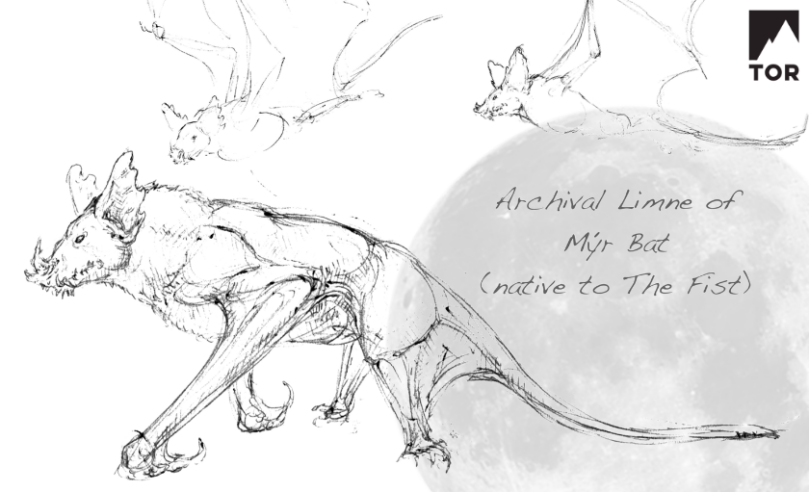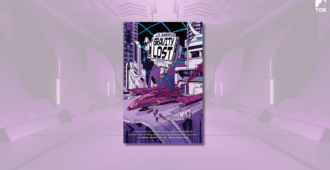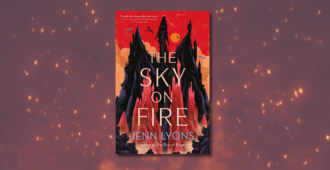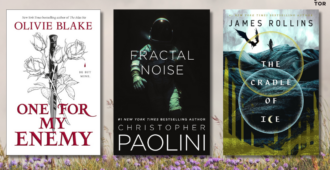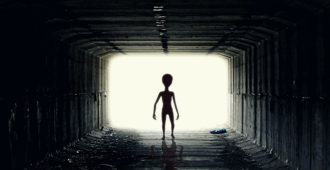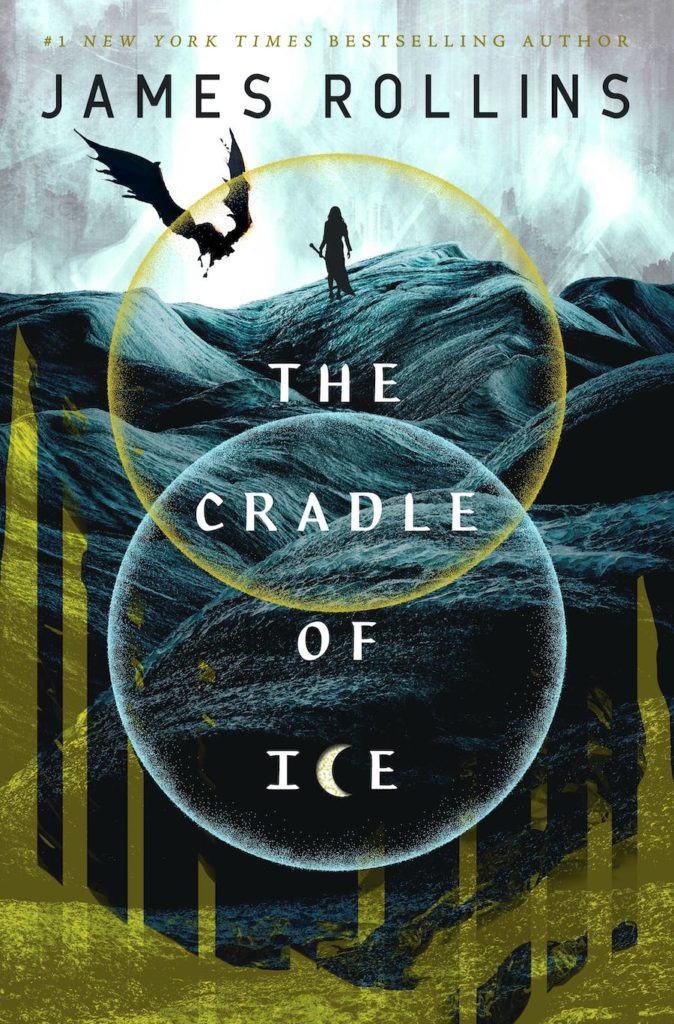 By now, Tor is at the forefront of research into what exactly constitutes “dragon.” We’ve entertained many queries throughout the years, determining if the umbrella of dragon extends to hippos, snakes, and Godzilla. Now, we turn to the expertise of James Rollins to advise on the dragonic status of bats. If you’ve read The Starless Crown and its sequel The Cradle of Ice, you probably know the answer.
By now, Tor is at the forefront of research into what exactly constitutes “dragon.” We’ve entertained many queries throughout the years, determining if the umbrella of dragon extends to hippos, snakes, and Godzilla. Now, we turn to the expertise of James Rollins to advise on the dragonic status of bats. If you’ve read The Starless Crown and its sequel The Cradle of Ice, you probably know the answer.
Check it out!
by James Rollins
My love for the natural world and all its myriad creatures was one of my main drives for pursuing a career in veterinary medicine. Even today as a full-time writer, I’ve not fully stepped away from that profession. As I’ve stated many times during book talks—yes, I can still neuter a cat in under thirty seconds.
Still, my greatest fascination about Nature is how it adheres to a dictate stated so succinctly in Jurassic Park: Life will find a way. I’ve always been captivated by the manner in which animals and plants discover innovative survival strategies to fill different environmental niches and how that fight has resulted in all the marvels (and horrors) found in the natural world.
While growing up, I found a new way of exploring this subject matter: in science fiction and fantasy novels set on different worlds. I found myself especially drawn to material that explored life’s resilience across fantastic worlds. Whether it was the sandworms of Herbert’s Dune, the engineered landscape of Niven’s Ringworld, the many species of Card’s Ender’s Game, or a universe of other writers tackling how life finds a way.
Even when it came to those novels that featured dragons, I found myself most interested in the biology and the circumstance of their origins. How did the telepathy and bonding in Anne McCaffrey’s Pern books come about? What steps were taken to harness the physicality of dragons to become warriors in Novik’s Temeraire series? In Martin’s books, could dragon eggs truly be encysted for ages and require fire to bring them back to life? If so, how and why?
When it came to crafting my own fantastic world in the Moonfall Saga, I took a similar scientific eye to its construction. The series takes place on a tidally locked planet, a world that circles its sun with one side forever facing the sun, the other locked in eternal darkness. The only truly livable clime is the band between those extremes of ice and fire. Across such a harsh and unforgiving landscape, I wanted to build a biosphere of flora and fauna that made evolutionary sense. How would species survive the extreme cold and lack of sunlight? Could life find a way in the sunblasted hemisphere?
And what about dragons?
In the novel, one of the apex predators is a species of massive bat, with a wingspan of ten meters or more. We first see them in Book One (The Starless Crown). They inhabit the vast swamplands of Mýr—found in that more temperate climate of the world. They are nocturnal, haunting a drowned forest and roosting in a volcanic mountain. I wanted those bats to make biological sense, to have them fit that environmental niche in a natural way. Being arboreal, they would likely have evolved prehensile tails. As nocturnal creatures, they would need bell-shaped ears and still use ultrasonics to navigate. And without giving away any of the surprises in the books, there is a significant aspect to their biology that will allow them to bond to certain people.
In the books, I also wanted to add a level of verisimilitude to the bestiary by adding naturalistic sketches, drawings that you might find in a turn-of-the-century research journal.
Here is the Mýr bat:
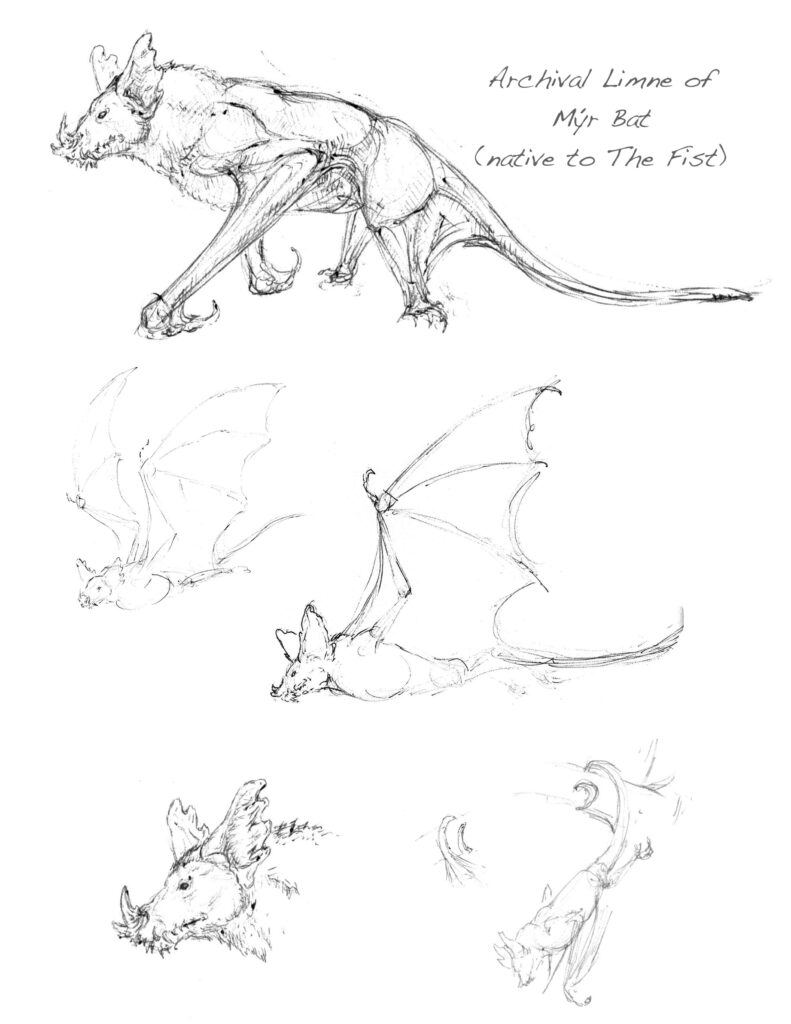
Keep in mind, life will find a way, so this species is not limited to those swamplands. A subspecies evolved in the dark, frozen half of the world. It adapted to fit that harsh niche, becoming smaller and stockier, with shaggy fur, and nasal flaps that could seal to conserve body heat. Likewise, in this treeless landscape, that prehensile tail would no longer be needed. They make an appearance in the second book in the series, The Cradle of Ice.
Here is their sketch:
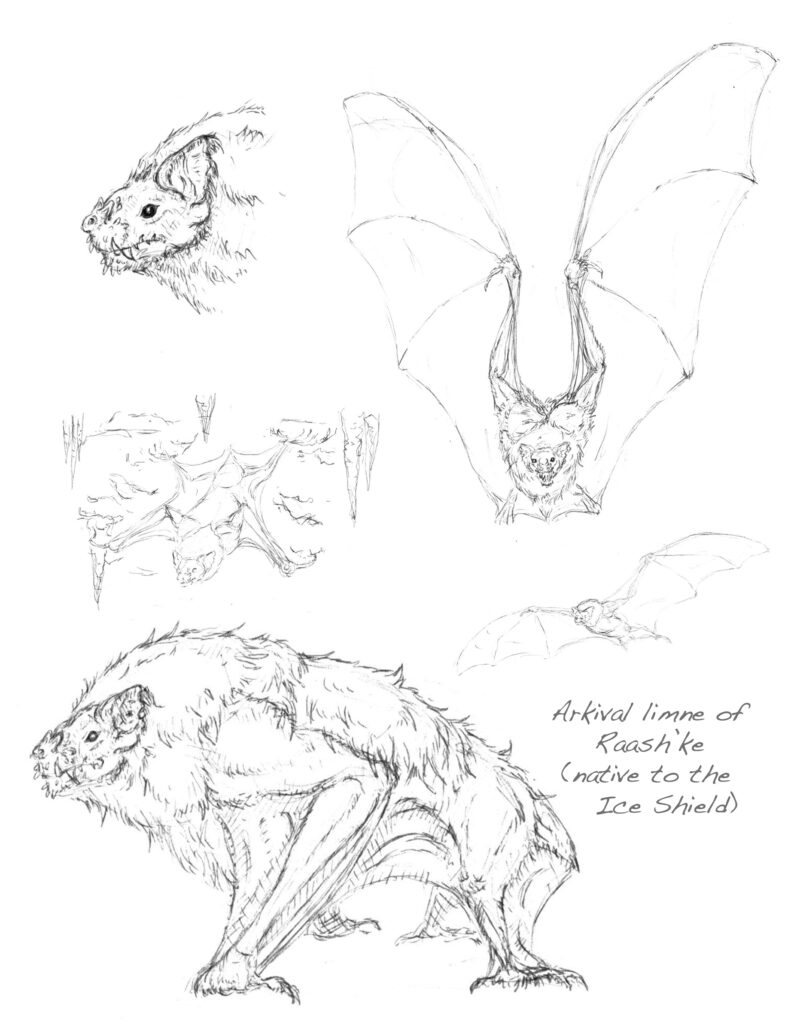
But what about the title of this blog post: Is a bat a dragon?
In the third volume in the series (A Dragon of Black Glass), which will be coming out in 2024, this species has also adapted to the sunblasted half of the world. To survive, they would need to burrow to survive, growing larger claws for digging, and bodies that would be hairless and elongated, with fanned tails for aerial maneuvering when out of their burrows. They would become known as “sanddragons.”
Here is a sneak peek at their preliminary incarnation (with the final version still to come):
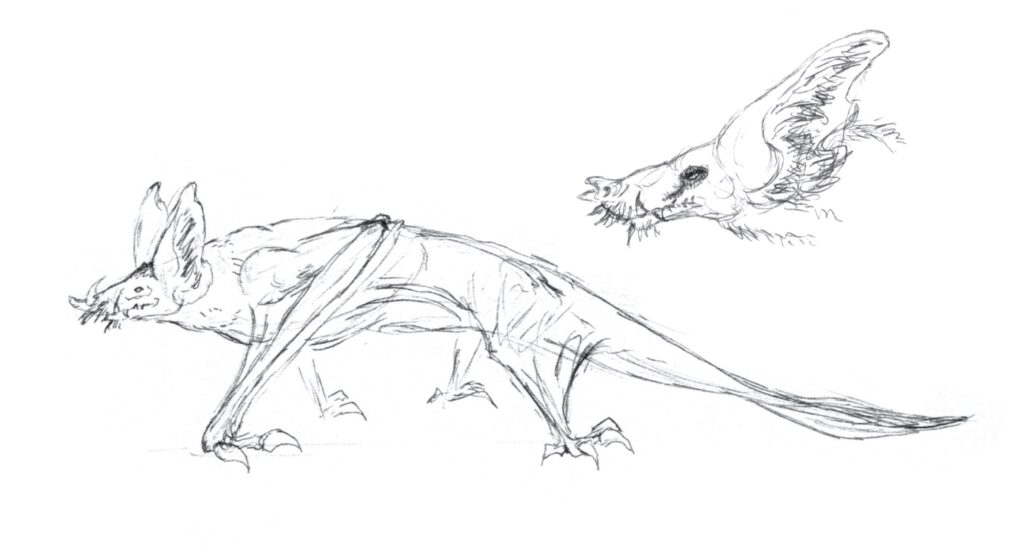
I must note that all of these drawings were beautifully executed by graphic artist, Danea Fidler—as were all the other creature sketches featured in the books. I look forward to sharing the final versions of these “dragons” in 2024 when A Dragon of Black Glass hits bookshelves.
Order The Cradle of Ice Here:

